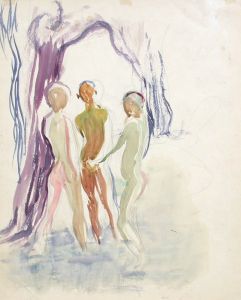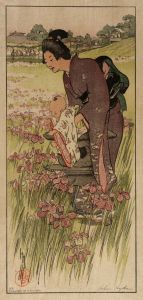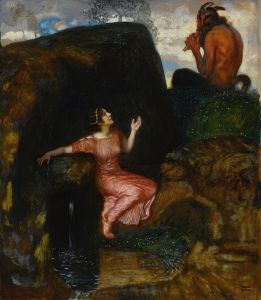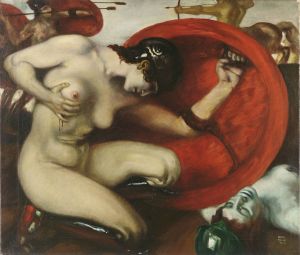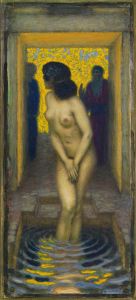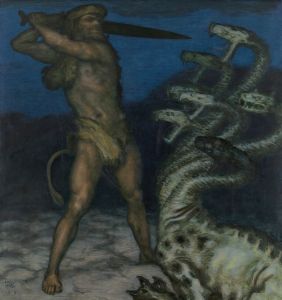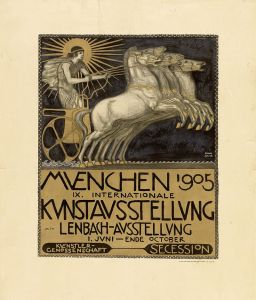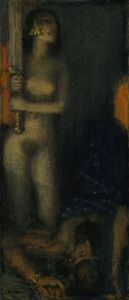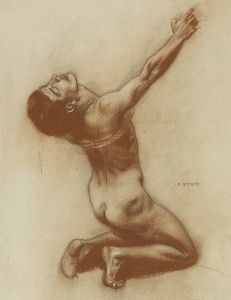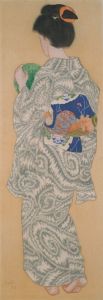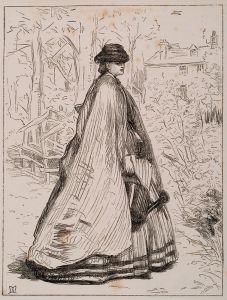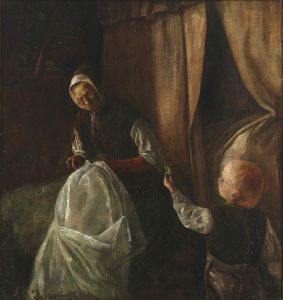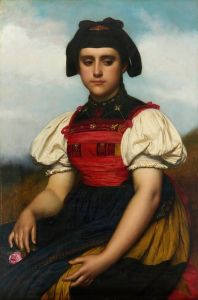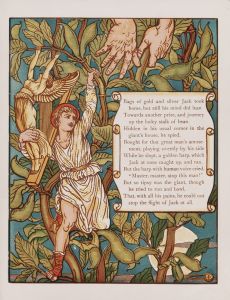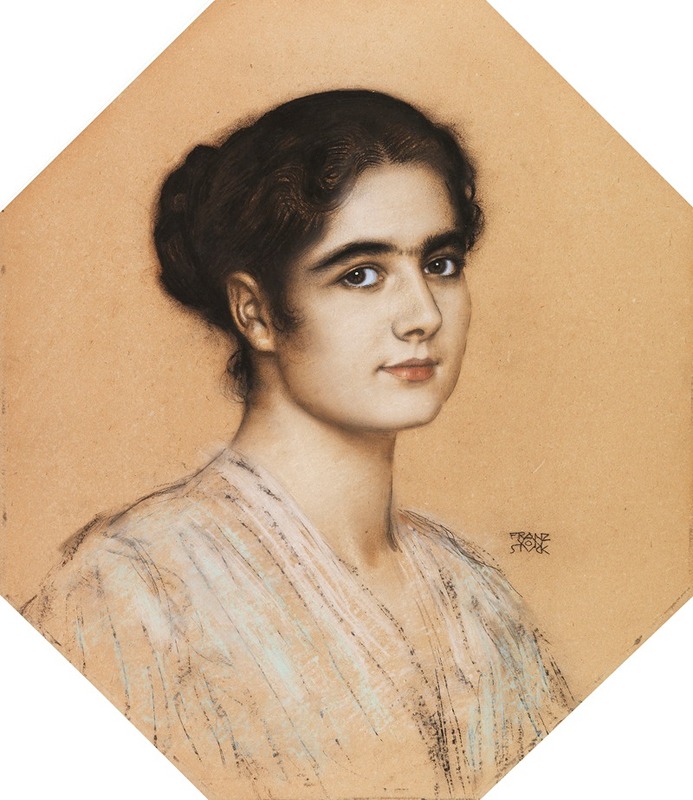
Bildnis der Tochter Mary
A hand-painted replica of Franz von Stuck’s masterpiece Bildnis der Tochter Mary, meticulously crafted by professional artists to capture the true essence of the original. Each piece is created with museum-quality canvas and rare mineral pigments, carefully painted by experienced artists with delicate brushstrokes and rich, layered colors to perfectly recreate the texture of the original artwork. Unlike machine-printed reproductions, this hand-painted version brings the painting to life, infused with the artist’s emotions and skill in every stroke. Whether for personal collection or home decoration, it instantly elevates the artistic atmosphere of any space.
Franz von Stuck's Bildnis der Tochter Mary (Portrait of the Daughter Mary) is a painting created by the German Symbolist artist Franz von Stuck (1863–1928). Stuck, a prominent figure in the Munich Secession movement, was known for his evocative and often mythological works, as well as his mastery in portraiture. This particular painting depicts his daughter, Mary, and is considered a significant example of his ability to combine personal intimacy with his characteristic Symbolist aesthetic.
The exact date of the painting is not definitively documented, but it is believed to have been created during the early 20th century, a period when Stuck was at the height of his artistic career. Mary, born in 1896, was the only child of Franz von Stuck and his wife, Mary Lindpainter. She frequently appeared in her father’s works, often serving as a muse and model. In Bildnis der Tochter Mary, Stuck captures his daughter with a sense of tenderness and psychological depth, reflecting both his artistic skill and his personal connection to the subject.
The painting is notable for its use of light and shadow, a hallmark of Stuck's style. The composition emphasizes Mary's youthful features, with a focus on her expressive eyes and serene demeanor. The background is typically subdued, allowing the figure to stand out prominently. Stuck’s use of muted tones and subtle contrasts creates an atmosphere of quiet introspection, aligning with the Symbolist movement’s emphasis on mood and emotion over realism.
Franz von Stuck was not only a painter but also an architect, sculptor, and designer, and his works often reflect a synthesis of these disciplines. His home and studio in Munich, known as the Villa Stuck, was a Gesamtkunstwerk (total work of art) that showcased his artistic philosophy. It is possible that Bildnis der Tochter Mary was displayed in this setting during his lifetime, though specific exhibition records for this painting are not readily available.
Today, Bildnis der Tochter Mary is recognized as an important work within Stuck's oeuvre, offering insight into his personal life and artistic approach. The painting is held in a private collection or museum, though its current location is not widely documented in public records. Franz von Stuck's legacy continues to be celebrated for his contributions to Symbolism and the Munich Secession, with works like Bildnis der Tochter Mary exemplifying his unique blend of technical skill and emotional resonance.





